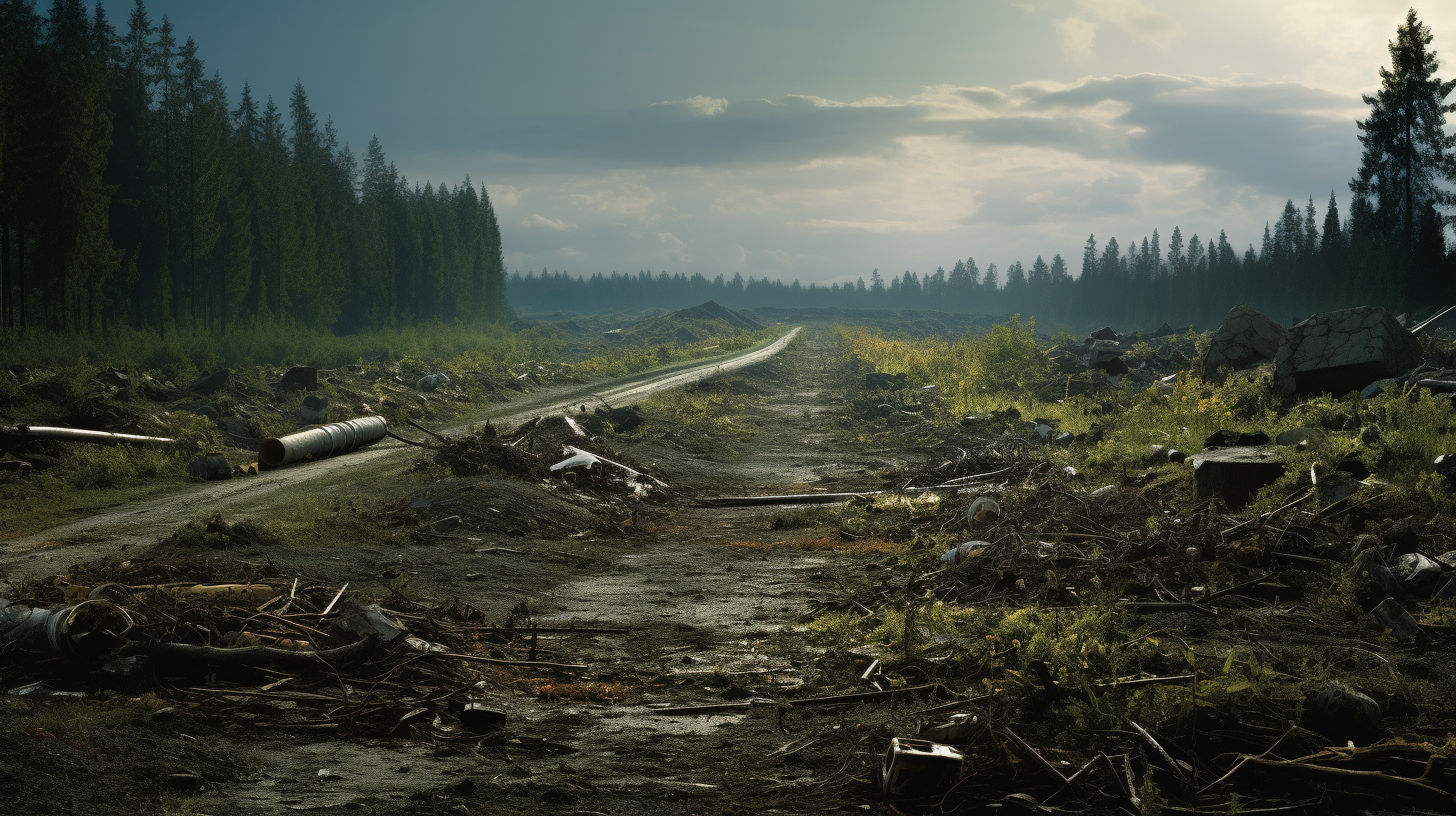In an age where the grey tendrils of highways once slithered across the land like a desolate grid, we now gaze upon a surreal renaissance, a phenomenon I shall call ‘Asphalt Meadows’. The stark juxtaposition of nature’s emerald blades piercing through the crevices of the fractured concrete complicates the narrative of a world rendered dystopian by human hands. This paradoxical rebirth unfurls across the continents where rubber once met road, and today, it meets the reclaiming fingers of Mother Nature herself.
The Creeping Green
As we wander these forgotten trails of transportation, one can’t help but marvel at the persistence of life. Wildflowers burst into vibrant life, stitching a patchwork quilt over the scars left by the vehicles of yesteryear. But these aren’t merely chaotic sprouts of resistance, no. These are the aspiring forests of tomorrow, the seedlings of succession that lay groundwork for ecosystems yet to be realized.
In the heart of what was once a bustling interchange, a microcosm of ecological succession plays out. Here, amidst the relics of tail lights and exhaust, silence reigns supreme. It’s a silence not of emptiness, but of anticipation. Grasses nod in the wind, birches and alders rise tentatively from the rubble like skyscrapers in reverse. One might even meet the gaze of a fox, who trots atop the broken barriers as if to claim this reclaimed land.
A Symphony of Eco-reclamation
Yet the return of such fauna is not an isolated event. It’s a symphony, with each species an instrument to the holistic rebirth of an ecosystem. Birds chirp from the metallic bushes of abandoned cars, bees hum between the lanes, daring to dream of highway hives. The audacity of life to thrive in a place once dominated by fossil-fueled behemoths is not just a statement; it’s a testament.
In these refuges, we witness evolutionary tales unfolding. Predators and prey adapt to the uncanny valley of urban detritus, painting a landscape that seems torn from the pages of a science fiction novel. But this is no fiction; it is the reality of resilience—nature’s inextinguishable ability to rejuvenate, to catalyze beauty from the ashes of neglect.
Reflections of a Bygone Era
One cannot tread these paths without musing upon the ethos of civilization past. Where rushing hours once eclipsed the rhythm of nature, now the pendulum has swung to an eerie solitude. This transition, from the roar of traffic to the whisper of wind, evokes a poignant nostalgia for that which has been forfeited and a stark admiration for that which persists.
Indeed, the footprints we left on the environment were deep, but not indelible. Through the creeper vines embracing overpasses, nature articulates its ultimate manifesto: a declaration of permanence amidst human transience.
The Moral of the Meadows
Thus, ‘Asphalt Meadows’ serves as a canvas for reflection. They embody the inescapable truth of nature’s dominion and the folly of humanity’s attempt to supersede it. These fields are not mere consequences; they are harbingers—heralds of a future that will go on with or without human custodianship.
In this dystopian tableau, lessons abound for those who choose to heed them. The asphalt meadows remind us to tread lightly, respect the resilience, and perhaps, in the ruins, find a form of redemption—not for the world we’ve lost, but for the one that carries on.
